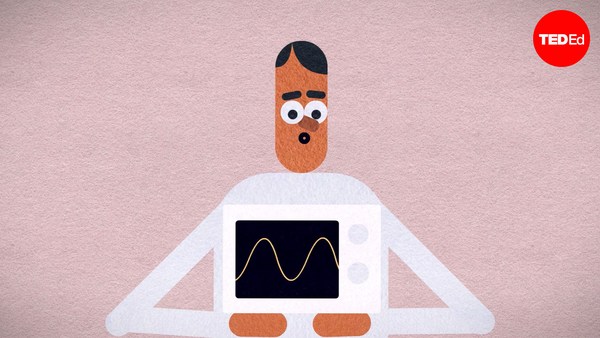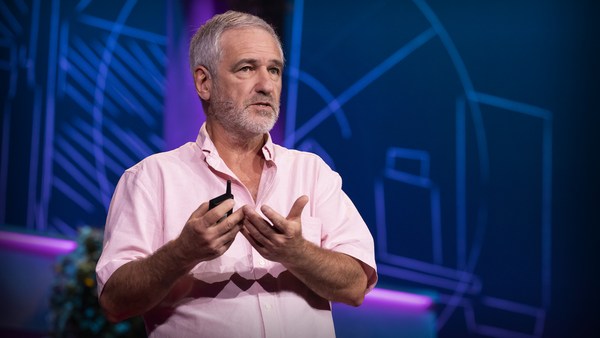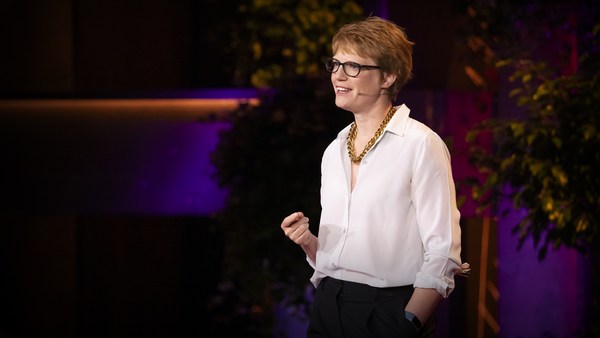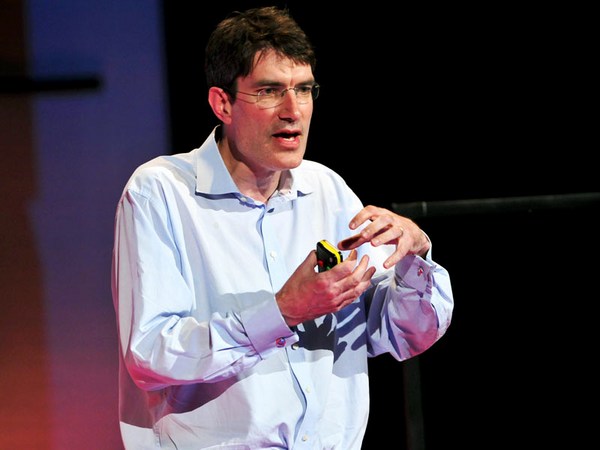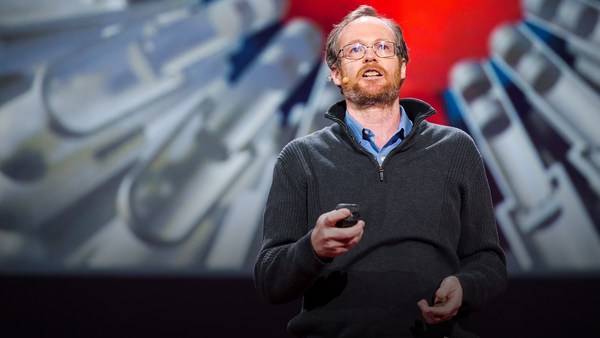What would you do with the largest laser in the world? Send a beam into space. Strap the laser to the head of a shark. Or maybe just use it to amuse your cat.
Well, the laser that I'm talking about is nothing like your typical laser pointer. No, this laser is a thousand times more powerful than the entire US electrical grid. It's the most energetic laser in the world. I guarantee you you're going to want to keep your cat far, far away from this laser.
Now, I'm a physicist, so what I would want to do with this laser is something a little bit different. I take that laser and split it into almost 200 beams, and shine them from every angle onto a little pellet of hydrogen. Hydrogen, that very first element on the periodic table. I'd use the laser to squeeze and compress that hydrogen until the atoms themselves fuse. That's called fusion. And it’s the same reaction that powers the Sun.
So with our giant laser, we could actually create miniature stars right here on Earth. Pretty cool, right?
OK, that's the goal. But why? Why do we care to do this? Fusion means unlocking a different kind of nuclear power. Instead of splitting big, heavy atoms, like we do with fission in today's nuclear power plants, fusion means bringing together the atoms of a light element until they merge.
In our case, we're going to use deuterium and tritium. They are isotopes of hydrogen, heavy hydrogen. And if we can use our lasers to get them close enough together at hot enough temperatures, and hold them there long enough until they fuse, what we create on the other side is a helium nucleus and a neutron. And it just so happens that that helium and neutron weigh just a little bit less than our deuterium and tritium originally did.
So we're going to take that differential in mass and put it into an equation that everybody knows really well. Einstein's E equals --
Audience: MC squared.
Tammy Ma: E equals MC squared. Where that "m" is that differential in mass, we're going to multiply by "c," the speed of light, a huge, huge number squared, and with that, get a tremendous amount of energy out.
How tremendous? Well one single pound of fusion fuel has the same amount of energy as 5,000 barrels of oil, or 3.5 million pounds of coal. So fusion is the ultimate energy source, not least because the fuel that we need for fusion is also very abundant.
Deuterium is naturally occurring in seawater. About one in every 7,000 particles is D2O instead of H2O. And tritium, we know how to breed from lithium. So conceivably we actually have enough fusion fuel on Earth to last us 30 billion years of human consumption at today's levels. If you ask me, I'd call that energy security.
Fusion is also clean energy. In our equation, it was a deuterium plus a tritium gave us a helium. Carbon is nowhere in that equation.
Fusion is also inherently safe. In order to start a fusion reaction, we first have to put energy into the system to make the atoms fuse. So if you ever want to stop a fusion reaction, you just cut off that initial energy source.
Fusion will create waste, but it's not the kind of waste that will last for tens or hundreds of thousands of years. Instead, the low-level nuclear waste of fusion can decay away in just decades. And that means we can place fusion power plants almost anywhere, near large population centers and big cities, and fusion power plants would be compatible with our current grid infrastructure or the smart grids of the future.
And finally, fusion energy is also flexible energy. Energy when you need it and can come in different forms. Electricity to power our homes, but also high-temperature heat for industrial use.
Now, to be fair, there are some downsides to fusion, too. Fusion is incredibly complex and incredibly difficult. The development of fusion has been and will be expensive. But the potential benefits of fusion are so great that it is worth it.
All right, so how do we actually make fusion work here on Earth? Well, that's the problem that we've been working on for nearly 60 years now.
Let's go back to that ginormous laser. It's called the National Ignition Facility, or NIF, at the Lawrence Livermore National Lab. The NIF is the world's largest, most energetic laser, housed in a building the size of three American football fields, side by side and ten stories tall. It's not just one laser. It's actually 192 separate lasers, and each one alone is one of the most energetic in the world. And we're going to combine all 192 of those lasers and shine them on a little fuel pellet about the size of a peppercorn.
Alright, let me take you into the facility and give you a closer look. The laser starts as a little pulse of light, the fraction of the energy of a typical laser pointer. We're going to split that beam into 192 ways. And those beams are now going to bounce back and forth across this giant facility, each beam passing through hundreds of slabs of laser glass getting boosted up in energy. In total, each beam is going to travel nearly a mile and get amplified up a million billion times in energy and expanded in size from a little pinprick to over a square foot. And then all 192 laser beams are going to get directed towards the fusion chamber. Half the laser beams go up and half come down, and they're going to direct and concentrate their light on a tiny cylinder that sits right in the middle, about the size of a pencil eraser.
The lasers go into that cylinder and create a bath of X-rays that then envelop the little fuel pellet that sits right in the middle. Those X-rays are so intense that they start blowing off the shell of that pellet like a rocket. And then by conservation of momentum, the rest of the capsule squeezes inward, equal and opposite reaction.
We're going to reach temperatures of over 180 million degrees Fahrenheit, hotter than the center of the Sun, and pressures that would feel like 100 billion Earth atmospheres pressing down on you. And then we start a little spark right in the center, which then propagates through more of that fuel, creating a miniature star, and with it a huge burst of energy.
And if we do it right, we can actually get a whole lot more energy out than the energy that went in to start all of this.
(Applause)
I know, it sounds really easy, right?
(Laughter)
Well, obviously this is a story that bridges enormous scales. The temperature and density of a star focused in on the atomic level.
Remember how I said that laser is a thousand times the power of the US electrical grid? Well, power is defined as energy per unit time. So what we're doing is taking a huge amount of energy and compressing it down into just nanoseconds. And that's why every time we fire the lasers, the lights don't flicker across the globe. But we are able to create conditions that are the hottest in the entire solar system.
All right, so I know what you guys are all thinking. Like, how could this actually possibly work, right? And who would be crazy enough to try? Well, tens of thousands of scientists and engineers around the world, including me.
And scientists are trying all different approaches to fusion. Not just giant lasers, but sometimes giant magnets. Things that have cool names like tokamaks or stellarators that can help shape and contain the fusion. And right now, we're actually seeing a whole bunch of new, private start-up fusion companies pop up all across the globe, each one trying a unique and different approach to fusion. It's a whole host of brave and brilliant individuals working hard to make this dream a reality.
And our team at Lawrence Livermore National Lab are the stewards of work that started in 1960 because of national security. We need to understand fusion, to understand how to ensure that our US nuclear arsenal stays safe and effective. And that is what has provided the steady funding to pursue this very difficult physics challenge over decades.
So yeah, it took us 12 years to build the NIF, and we've been doing experiments using it for nearly 15 years more now. And in that time, we've improved our physics understanding and computational simulation models. We've designed new diagnostic instruments capable of taking better, clearer, faster pictures of the experiment. We've continuously pushed up the laser energy and found ways to build better targets.
And guess what? In December of 2022, we finally did it.
(Applause)
Our team at Lawrence Livermore National Lab demonstrated fusion ignition. For the very first time in human history, we generated a controlled thermonuclear fusion reaction in the laboratory that generated more energy out than went in with the lasers to start it.
(Applause)
That's right, we were able to light a match and turn that into a bonfire. And in the process, release a new form of energy that is a million times more energetic than a chemical reaction. And now, now we've actually been able to repeat ignition four more times in just the last 15 months, with our most successful experiment giving us over twice as much energy out as we put in with the lasers.
So are we done? Well, not quite. In order to move towards that fusion-energy future, we'll have to figure out how to harness this energy in a working fusion power plant.
And to be clear, there's still a long scientific and engineering road ahead. Just to build on our successes at NIF, we'll have to build more efficient lasers, mass manufacture targets and figure out robotics for automated operations and more. The depth and breadth of this challenge will require sustained investment from government and private industry, and all of us working together. We're all racing to make this a reality, but there's still a lot more work to be done.
I don't know exactly how long this will all take, but I do know that we can do it. And when we do it, when we make fusion energy a reality, energy will become so plentiful that it will no longer be a limited resource. This will change the world as we know it.
When energy becomes essentially unlimited, there are unlimited ways to use this energy. Every country will be energy independent. Standards of living will rise around the world, and we'll be able to use energy in creative new ways as well, like carbon capture at scale to combat climate change. Vertical farming for delicious, sustainable food for all, and desalination of seawater so that everybody has access to clean water.
We can do all this and more with fusion. Fusion can ignite that future.
Thank you.
(Applause)
